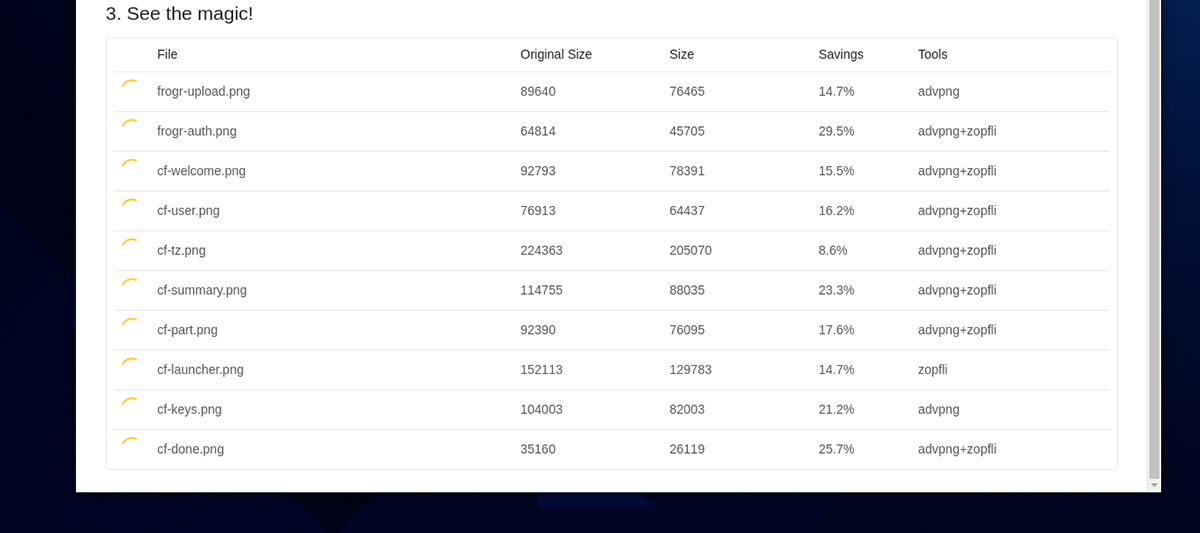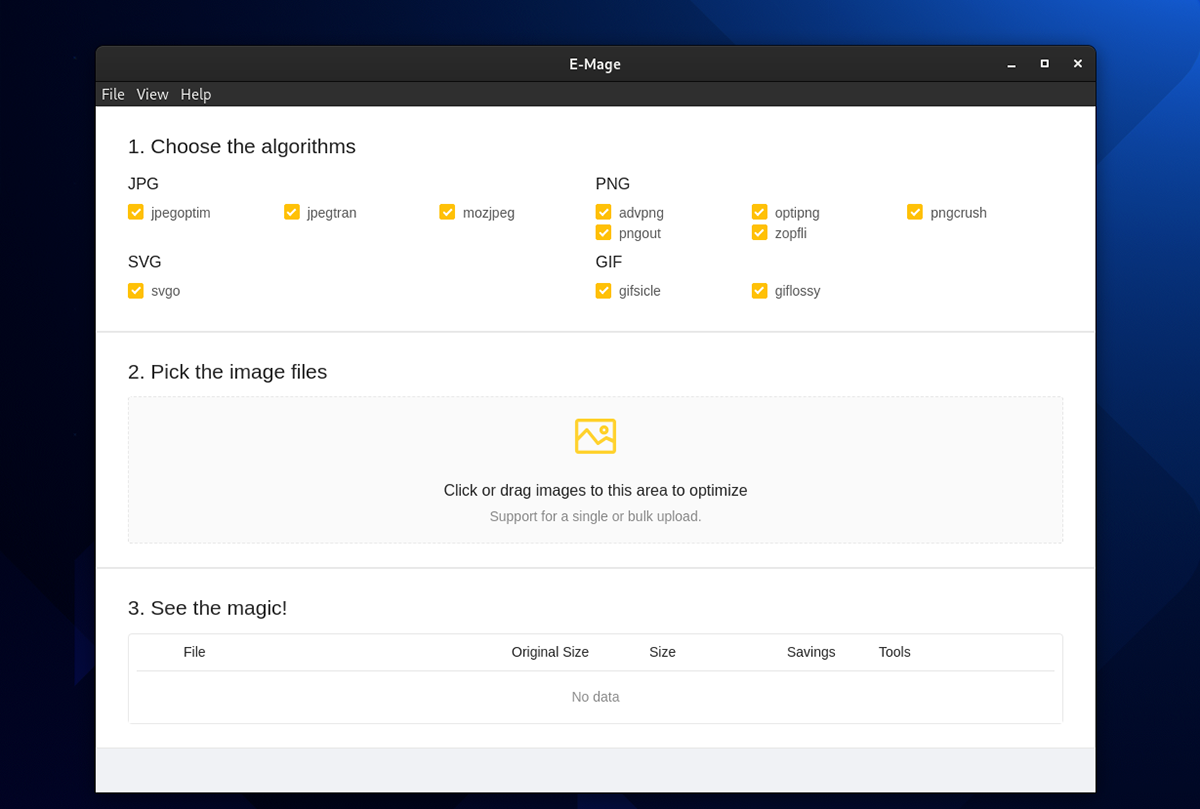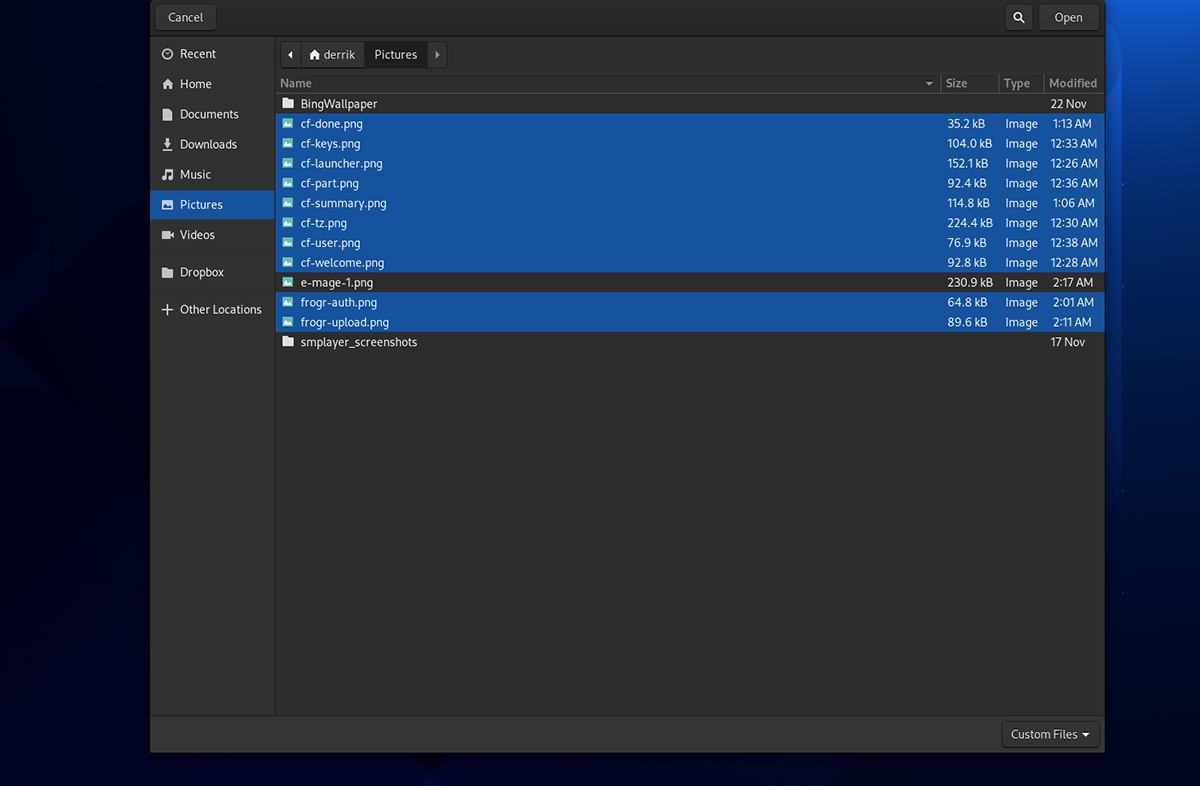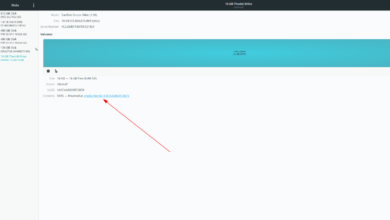Need to compress some images on your Linux PC to make them smaller? If so, check out E-mage. It’s a neat little tool with tons of features that can make compressing images on Linux like magic!

Installing E-mage on Linux
E-mage must be installed on your Linux system before you attempt to use it. Sadly, the program doesn’t come pre-installed on any Linux operating system. Instead, you’ll need to launch a terminal window to get the app working.
Unsure about how to launch a terminal window on your Linux desktop? Press Ctrl + Alt + T on the keyboard. Or, search for “Terminal” in the app menu and launch it that way.
Once the terminal window is open and ready to use, the installation of E-mage can begin. Set up the E-mage application using the instructions below that correspond to the Linux distribution you use.
Ubuntu
If you’re using Ubuntu, you won’t be able to get the E-mage application up and running through the official Ubuntu software repositories. Instead, you’ll need to download the DEB package from the internet and install it.
To get your hands on the latest E-mage DEB package, use the following wget download command.
wget https://github.com/douglasjunior/emage/releases/download/1.1.0/emage_1.1.0_amd64.deb
Once the DEB package is done downloading, you can install the package on Ubuntu using the apt install command. This installation should be quick.
sudo apt install ./emage_1.1.0_amd64.deb
Debian
If you’re on Debian Linux, you’re in luck! The E-mage application is available for users via a downloadable DEB package. To get your hands on it, make use of the following wget download command.
wget https://github.com/douglasjunior/emage/releases/download/1.1.0/emage_1.1.0_amd64.deb
After downloading the latest E-mage DEB package to your Debian system, the installation can begin. Using the dpkg command below, set up the newest version of E-mage.
sudo dpkg -i emage_1.1.0_amd64.deb
Once the E-mage application is set up on your Debian computer, you must correct the dependency issues that may have occurred during the setup process.
sudo apt-get install -f
Arch Linux
The E-mage application is available on Arch Linux, albeit unofficially. Sadly, you cannot install it from the official repositories. However, it is possible to get the app working through the Arch Linux User Repository.
To start, use the pacman command and install both the “git” and “base-devel” packages. These packages are essential to interact with the AUR.
sudo pacman -S git base-devel
Once the two packages are set up on your computer, use the git clone command to download the Trizen AUR helper and the makepkg command to install it.
git clone https://aur.archlinux.org/trizen.git cd trizen/ makepkg -Sri
Finally, install the E-mage application on your Arch Linux computer using the trizen -S command.
trizen -S emage-bin
Fedora
Sadly, there is no RPM package of E-mage for Fedora users. To get it working, follow the AppImage instructions.
OpenSUSE
If you’re using OpenSUSE, you’ll need to follow the AppImage installation instructions as there is not an RPM package available.
AppImage
To get E-mage working via AppImage, start setting up the AppImageLauncher runtime on your computer. This tool will make setting up E-mage much easier.
Once the AppImageLauncher app is done downloading, head over to the E-mage website, download the AppImage and launch it with AppImageLauncher to install it on your Linux system.
Compress images in Linux like magic with E-mage
To compress images with the E-mage application, launch it. Then, follow the step-by-step instructions below.
Step 1: Under the “Choose the algorithms” section, find the algorithms you wish to use to compress your JPG, PNG, or GIF image. By default, all algorithms are selected. If you want to change the defaults, uncheck any algorithms in this section.

Step 2: After selecting which algorithms you wish to use to compress images, move on to the “Pick the image files” section. In this area, click on the picture icon. When you select the picture icon, a pop-up window will appear.
Inside the pop-up window, browse for the image you wish to compress. If you need to compress images in bulk, hold down the Ctrl button while making your selections with the mouse.

Step 3: Allow E-mage to compress your images. Under the “See the magic” section, the app will show the process of your compressed photos, what algorithms it used to compress, and how much it has optimized the images.
Please note that if images fail to compress via E-mage, your Linux system lacks specific dependencies. For more information, click on the “X” button to view the error in E-mage.

Step 4: When the compression is complete, the E-mage app will have automatically replaced the images with more optimized versions. From here, you can close the E-mage application.





